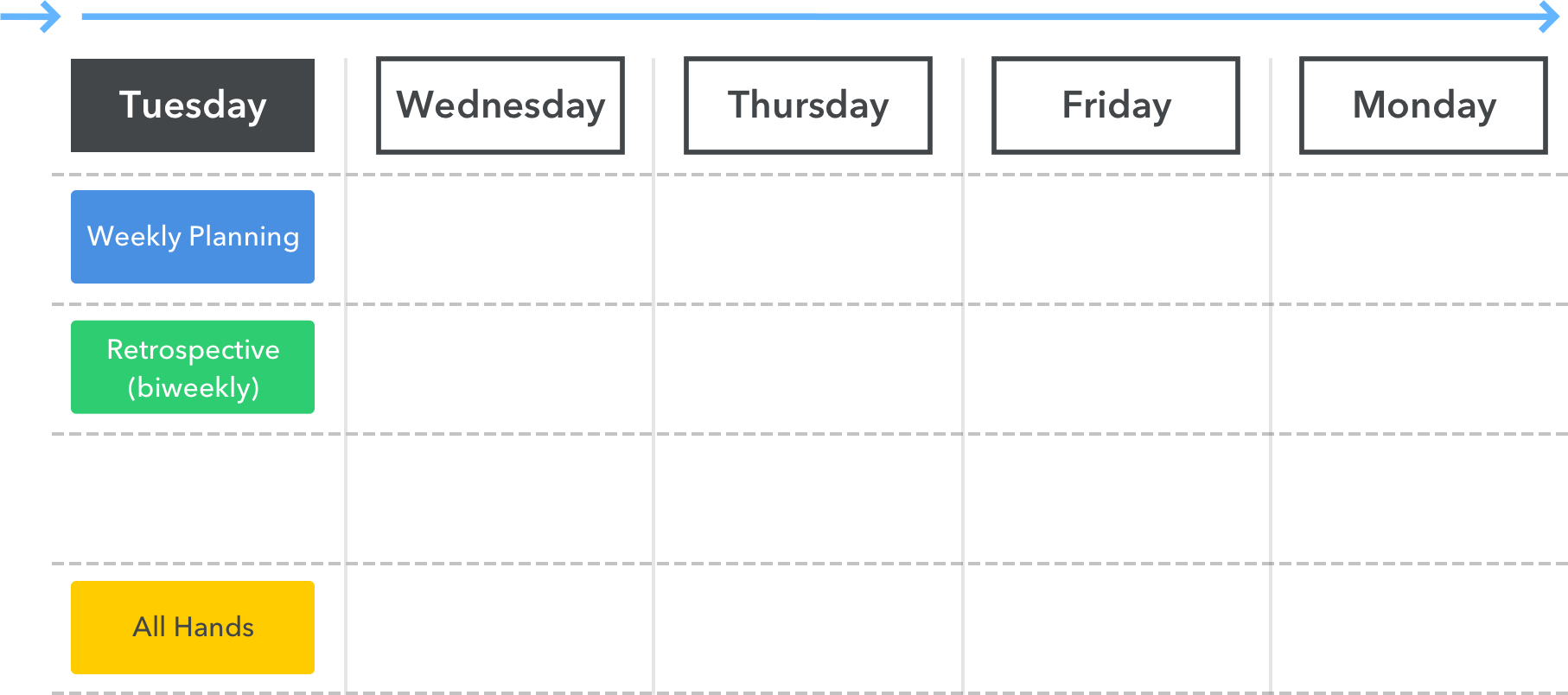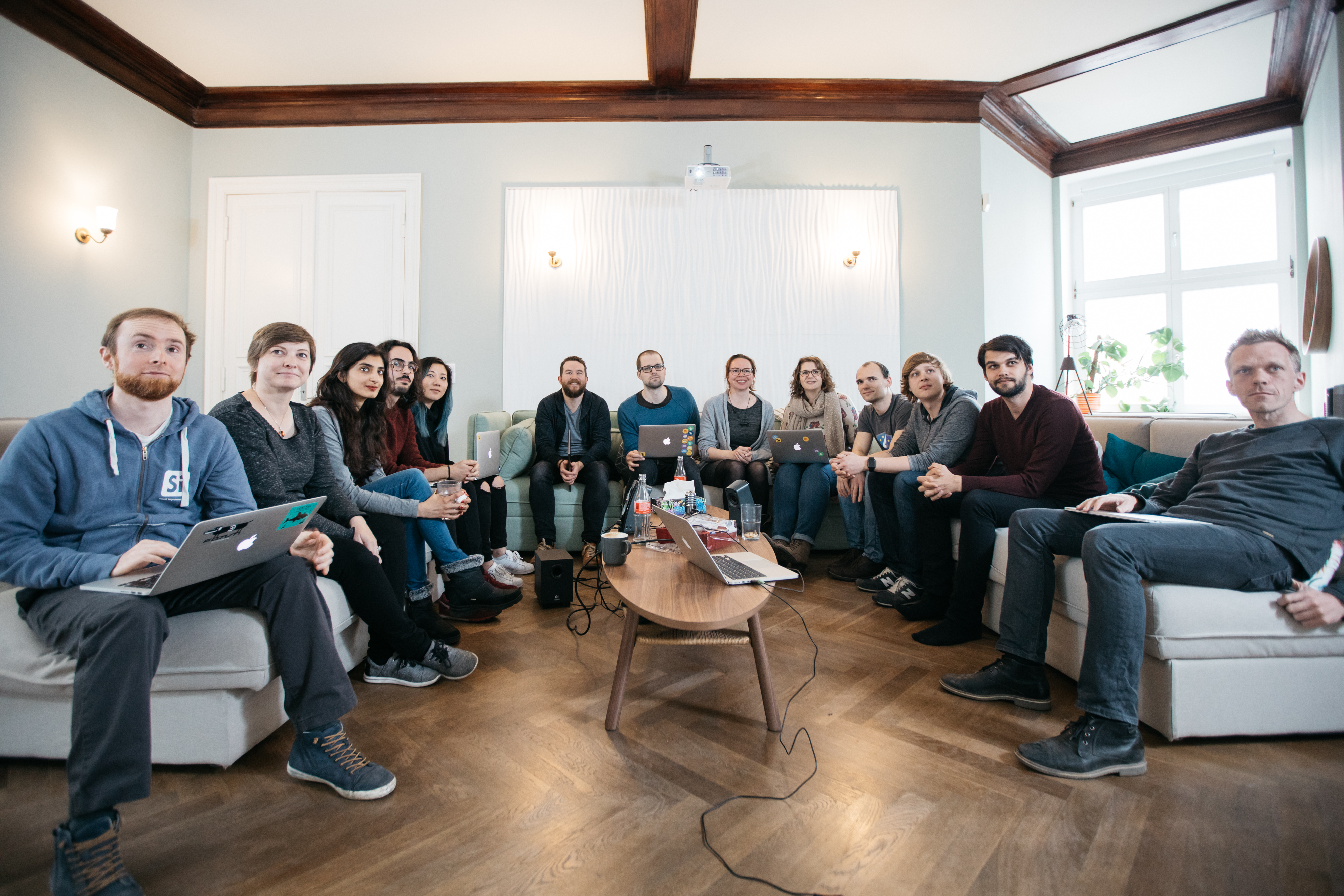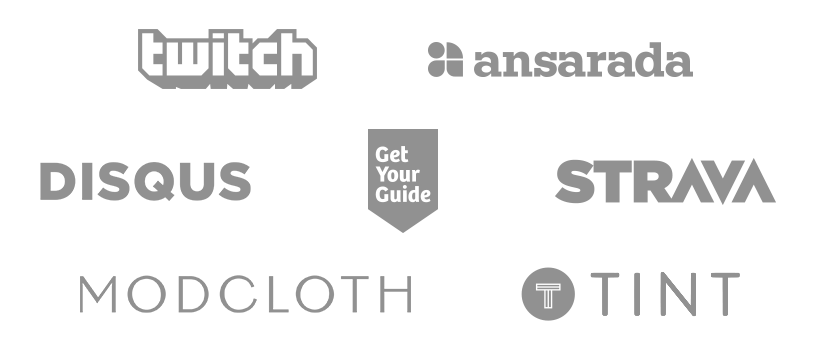Here at Small Improvements we have 3 development teams. Each team is an autonomous unit that consists of frontend & backend developers, UI/UX developers and designers, so that they can build and ship features independently.
In this blogpost we want to share an insight into what the development process looks like in Team Green. We don’t follow any predefined scheme (like Scrum or Kanban). Rather, we pick the tools and methods that work best for us and adjust them constantly to our needs. Other teams work in a slightly different way, but the overall structure happens to be quite similar.
Iterations
The main building block of our team process is our weekly iteration. Unlike Scrum, these aren’t sprints: it’s not our primary concern to deliver exactly what we had planned, they rather act as a central clock that give us recurring temporal structure.

Weekly planning
Each iteration starts on Tuesday morning with our weekly planning meeting: we sit together as team and review the last iteration in order to clean up leftovers from the last week that need to be taken over. Afterwards, we fill the upcoming iteration with tasks from our team backlog until we feel that we have found a good scope. Usually, we tend to overplan slightly, so that nobody runs out of work. (Read the section about backlogs to find out how we know what to work on next.) Estimations help us to find a meaningful size for our tasks, but we are not too strict about them: we aim for high throughput, but still value quality over delivery dates.
Retrospective
We are doing retrospectives on a fortnightly basis. They last one hour and are a place for discussion about our workflow and process. Everyone can talk about their thoughts as long as they like. However, we don’t just aim for good conversations: our goal is to identify actionable things that we can improve on until the next retrospective. We don’t want to change everything at once. Our philosophy is continuous improvement through small yet steady steps. Our retrospectives are facilitated by one team member, who is in charge of preparing, moderating and documenting the meeting.
All-Hands Meeting
Every Tuesday evening the entire company comes together for an all-hands meeting, including at least four of our employees who are regularly working from different time zones. Every team (not just devs, also marketing, customer success, etc.) reports their progress from the last week and announces their agenda for the upcoming week. Thereby we are making sure that everyone is up to date on what’s being worked on at the moment. In contrast to a sprint review, this meeting is not about giving account. It’s rather a window in time, where every team shares insight into their current status.
Long-term planning
Roughly every four weeks we conduct a long-term (or monthly) planning to stock up our team backlog and discuss our roadmap in the long run.
Team backlog
We have mainly four sources of work that supply our team backlog.

Product and feature work
We have two dedicated product managers who maintain a product roadmap, where tasks and stories are prioritized and broken down into smaller pieces. Every developer is actively involved in product development, but our PMs do a lot of organization and planning upfront, which is a great relief. Every dev team has a designated Feature Coordinator who constantly stays in touch with the PMs and arranges meetings and conversations when needed. Together, we prepare features ahead and make sure that – once we start to work – everything is right in place.
Tech work
Another big source of work is our tech roadmap, which is a joint venture from all developers. The tech roadmap usually contains refactoring and innovation projects that don’t necessarily create immediate customer value. We discuss and prioritize these projects together in our weekly Dev-Exchange meeting. As examples, we recently had:
- Migrating our backend authorization logic to a predicate-based framework written in Groovy
- Making further progress with our Angular-React migration: one step was to introduce React Router 4, which we did a couple of weeks ago
- Building and launching a dedicated microservice that renders auto-generated user avatars for all users who didn’t upload an individual avatar yet
Apart from the tech roadmap, we also have a biweekly DevOps meeting. However, since we are hosted on Google App Engine, we are usually not too concerned with DevOps tasks so the workload varies a bit in that respect. That being said, we still have some fun tasks on our current agenda, such as dockerizing our local development setup.
Design work
All designers and frontend-addicted developers form a so called “meta-team” that comes together every week for a design meeting. This yields smaller tasks such as the overhaul of graphics and icons, but they also work on bigger projects like revamping our style guide. Lucas (our UI/UX developer) usually brings tasks from the design meeting into our iterations.
Side projects
Apart from these three bigger backlogs, we have some smaller sources of work that can be summarized as “side projects”:
- Every employee at Small Improvements is encouraged to take time for personal development. (In Team Green we believe heavily in manifesting our personal goals with Objectives). If someone wants to take time to make progress with their Objectives, they are free to file a time slot in the iterations. For instance, Sharmeen is currently on her mission to increase awareness about possible vulnerabilities so we can maintain the security of our application, and recently wrote a security-oriented development guideline for the backend.
- Usually, there is always room for small spike and innovation projects in order to explore new technologies and ideas. As an example: a couple of weeks ago, Jan set out for one day to try out flow type annotations in our frontend code. In the end, we decided against it, but the experiment served as basis for a valuable discussion.
Bringing it all together
The interesting question now is how these backlogs are balanced: the answer might be a bit disappointing, since we don’t have a secret formula that tells us where to pick from next. In fact, the team roadmaps are a matter of ongoing negotiation between all involved parties. Sometimes it makes sense for a team to take over a task because they already have expertise in that area and can deliver outcome fast. Another time we decide to assign the same project to a different team, because we think that it’s a valuable opportunity to share knowledge and prevent silos. Small Improvements is still a comparatively small company, so we don’t need formal processes and heavy decision-making hierarchies. Most of the time we can figure it out by just talking to each other, which is a great privilege.


